Supposedly inspired by the FSM Beskid project, although Renault has never openly acknowledged it, the first Twingo took advantage of its miniature minivan format, mixed with the versatility of a nice and simple interior, with sliding rear bench seats and a "smiling" face to place more than two million units on the market.
But it was time to renew it in 2007 (yes, it survived 15 years!) and the second generation did not achieve the success of its predecessor. Undoubtedly, it was a better product, but it lost the character, the personality that made people like the car and became an option for young and wealthy people looking for an urban solution. It also had to face Fiat's reinvention. The addition of the Panda and the 500 did a lot of damage to the Twingo 2, which had a hard time finding its place in an increasingly competitive market and where having its own personality was an added value that also provided more profitability to the parent company.
For the third model Renault has been able to detect the problems and has opted to solve them with a radically different product. It's not really a Twingo, nor does it resemble a Twingo technically or in its manners, but it's much more like a four-door Smart, as we'll tell you below. And that's no coincidence, after all it's the twin brother of the Smart ForFour, and a close cousin of the current ForTwo.
But has it recovered enough to make a comeback in the market?
Design
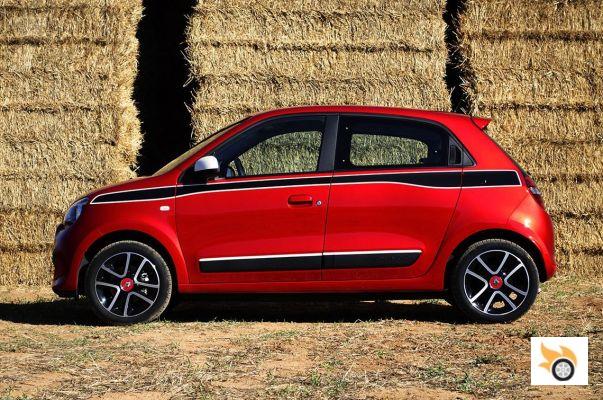
You can criticize the new Twingo for many things, but you can't attribute to it a bland aesthetic or a copy of other manufacturers. Although there are those who see traces of similarity between Twingo and Fiat 500, this reality vanishes when you see the car live and draw parallels with their ancestors.
The front of the car plays with optical groups that try to evoke the Renault 5 and 5 Turbo rally. The grille is dominated by a huge Renault logo "with moustaches", as we are accustomed to the French firm, while the lower air intake represents a wide smile, an aesthetic element used previously in the first generation Twingo.
The side view again evokes the roof shape of the Renault 5, while the wheel arches, greatly enhanced by the matte black vinyl strip of the unit tested, also plays to give muscularity to the side of the vehicle that, again, wants to remind us of the 5 Turbo.
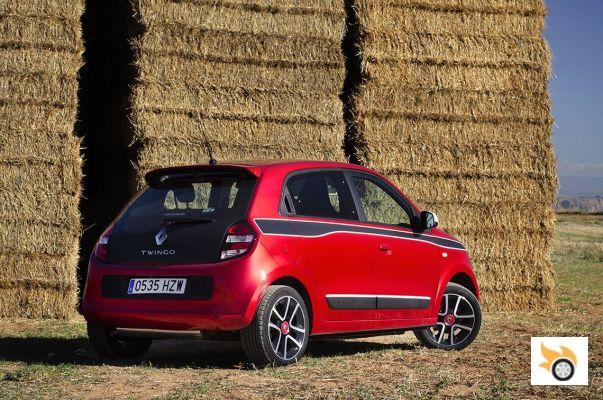
The rear, with the C-pillar stretched creating a diagonal line "straight" to the ground, as well as the shape of the rear lights are once again winks to the already requetecitado 5.
If we take a closer look at the finishing details of the bodywork, we are pleasantly surprised. It is not just a nice design in general terms, but a well-executed design, with quality details, from the plastic protections of the doors with the name of the car embedded to the finish of the glass tailgate or the design of the wheels.
Cabin
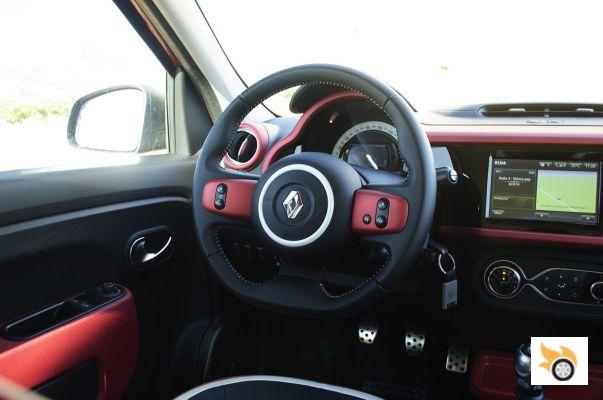
After the pleasant external surprise, it's time to get into the cabin. It's a pity that all the creative sprawl of the exterior isn't counterbalanced by the interior. It's true that there are touches of body colour, and the ergonomics are satisfactory in almost all aspects except the radio control located behind the steering wheel, but the choice of plastics and their finishes are not up to the level of the most chic rivals in the segment, despite this Twingo being the current top of the range.
There is space in the front seats. The driving position is high, as is often the case in this type of car, to improve habitability, while the available adjustments allow you to find your perfect seat quickly.
The rear seats are also surprisingly spacious, and access through the rear doors is adequate. The boot, at 174 litres (this can be increased to 219 if the rear backrests are placed upright, but then they can't be used comfortably by an adult), is meagre when compared to its five-door rivals (the Panda has a modular boot of 220-260 litres, while Volkswagen's Up! sits at 250 litres).
The Fiat 500, meanwhile, makes do with 185 litres, but still has more space than the Twingo if the Renault keeps the rear seats in the 'normal' position.
The R-Link system, optional but fitted in our test unit, gives a very successful infotainment solution, with navigation, radio, music streaming via Bluetooth... Light reflections make it difficult to see, but otherwise it's very interesting.
What's not so interesting is the clock display, which in true Smart style dispenses with all technical information and concentrates on speed and fuel level, forcing us to change our ears and predict the engine temperature.
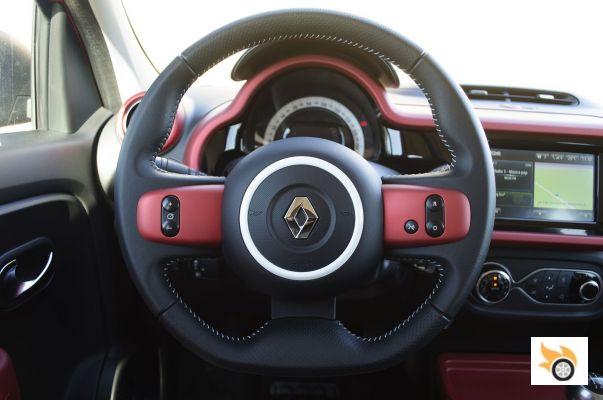
There are curious holes to leave objects, such as the little drawer in front of the gear lever. The automatic climate control is effective, and the steering wheel has a good finish, although it's hard to understand why the radio functions have not been integrated into it, preferring instead to use a 15 year old remote control that remains hidden.
The fact that the car is tremendously high (1.55) helps a lot to have a feeling of abundant space inside. The Twingo may be small on the outside, but inside it doesn't feel cramped at all. It's a pity, as I said above, that it doesn't have better materials covering the surfaces. Even the seat upholstery and trim are less well finished than in many of its rivals.
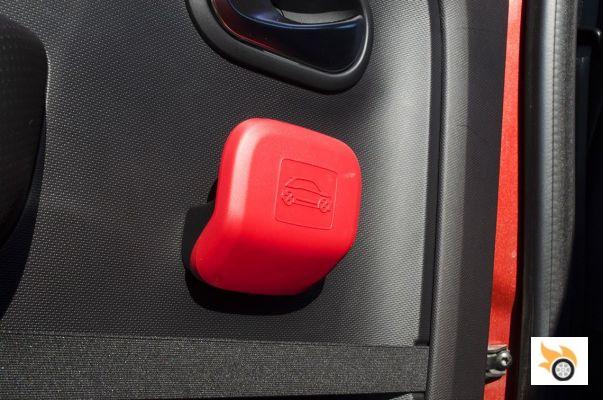
Technology
The Twingo is a four-seater Smart ForTwo. That's how things are in a nutshell. In a more elaborated version we have Daimler trying to recover from the stick of having failed with the first ForFour, and thinking about how to create a new ForTwo with a new platform that can be profitable.
That's where the Daimler-Renault marriage of convenience comes in. Product planners quickly find synergies: Renault needs a charismatic successor to the Twingo, and the conveniently lengthened ForTwo platform may be the answer, while Daimler can thus launch its ForFour as well.
The result, which in the end is what matters to the customer, is that the Twingo is still an evolution of previous generations of the ForTwo, but conveniently transformed into a four-seater with four doors, sharing much with Daimler's ForFour cousin.
The chassis is a steel monocoque, with McPherson strut front suspension, while at the rear we find a Dion bridge guiding the wheels, with the engine placed on top, tilted 49 degrees backwards.
The propellant is a three-cylinder that is offered in two variants, one of a liter of atmospheric displacement with 71 horsepower, and another, which is the one we have in the test model, with 90 horses and 0.9 liters of displacement.
The transmission is five-ratio manual in this unit, but since very recently can be purchased with a dual-clutch sequential box signed by Daimler.
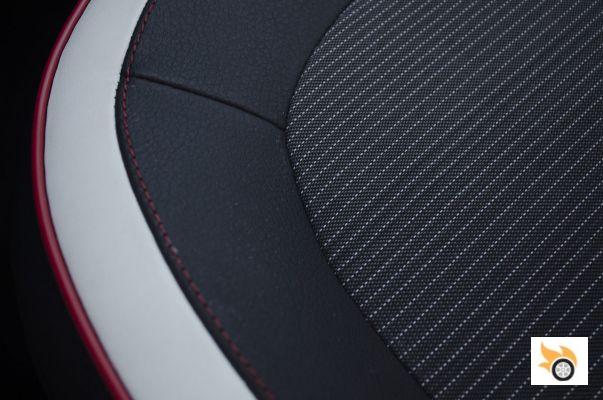
Renault promises 4.3 litres of fuel consumption per 100 kilometres, an unladen weight of 1,018 kilos and acceleration from 0 to 100 in 10.8 seconds, which is not bad for a city car designed mainly for street driving. The steering, by the way, is another great protagonist, allowing the Twingo to turn in 8.6 meters between kerbs, thanks to the lack of front wheel bearings, which gives it a clear advantage already from the technical specifications with respect to its rivals in the city.
Driving
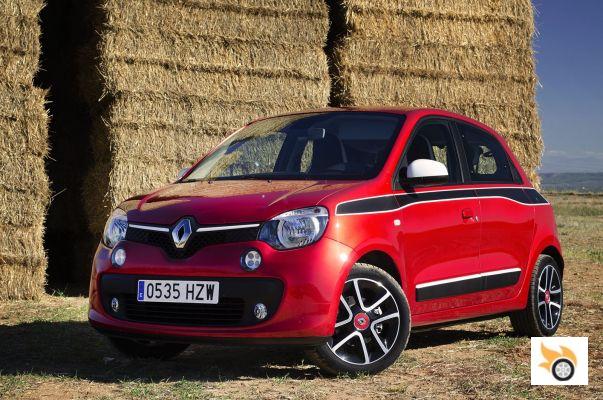
The previous Twingo had evolved as the rest of the market had, becoming a car with no overt personality when it came to driving it, rolling "well" in almost any conditions. But by doing things that way, Renault wasn't going to be able to win us over.
The French have decided to take a risk with the new Twingo, which is a 100% city car, and now I'll explain why.
As soon as you start the engine, the three-cylinder makes its presence felt. The sound of the engine is ugly, and the vibrations are quite noticeable at idle. The clutch is very smooth, perfect for continuous use in the city, and the gear lever has better travel and inserts than Renault is used to in cars of this size. As soon as you get going, although the sound is not wonderful and can be heard, at least you avoid the vibrations.
The first few kilometres in the city are a positive surprise. The Twingo, with this ninety horsepower engine, comes out quickly and swiftly from the traffic lights, it drives like no other car in the category and allows you, with its 3.6 meters long, to park anywhere with very few maneuvers, helped by its microscopic turning radius. Here the car convinces.
It handles speed bumps, speed humps and manhole covers relatively well, although the rear end is bouncy (more on this later), and the air conditioning and audio system serve to condition the cabin adequately for your daily routine in the city.
The downsides come from the brake pedal, for starters. When I said above that this car "is a Smart" four-seater, I wasn't kidding: the feel is reminiscent (in a bad way) of the Smart ForTwo, where it behaves like an on-off switch: you get a generous dead travel, and then a lot of braking power comes in. It takes a lot of getting used to before it stops scaring you at the start of braking and stops the car too much afterwards.
Then there's the engine delivery. While it has oomph and panache, as I said before, it has a problem with the shape of the torque curve. As there's no rev counter I can't tell you where in the engine it happens, but there's a double bump when you accelerate hard and the engine revs up hard, giving two clearly perceptible jerks for driver and passengers.
Be that as it may, in these urban jungle conditions, the Twingo makes do with 6.5 litres per 100 kilometres and delights us with its manoeuvrability. It has the good and the bad of the Smart (even though it's a Renault) in the sense of being able to turn where others wouldn't and having personality when it comes to getting around, but also its problems with the feel of certain controls.
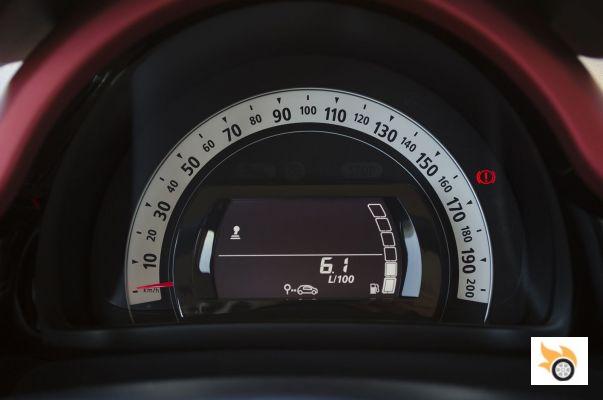
But there is another aspect to take into account, and that is the driving outside the urban environment. Up to 80 or 90 mph there's no problem with the Twingo, but when you're on a motorway with a light crosswind or gusty wind and approaching 120 mph, the car shows clear signs of lateral instability.
You then have to grip the steering wheel tightly and steer the Twingo's nose with precision, which constantly requires trajectory corrections. Overtaking long lorries or buses requires you to recover the technique of cars from two or three decades ago, and to anticipate a gust of wind that will easily move you a metre sideways. In a way, the driving experience in that sense reminded me of driving a Renault 8 TS around Alcañiz in 2003, where you also had to play with those aerodynamic idiosyncrasies.
So, why is this happening? Well, the Twingo is clearly a tall car (1.55m), and its centre of gravity is set back to favour the mobility of its rear axle. This, together with a lateral aerodynamic centre of gravity that must be clearly ahead of the car's centre of gravity, gives us that "sail" effect when the side wind blows against it.
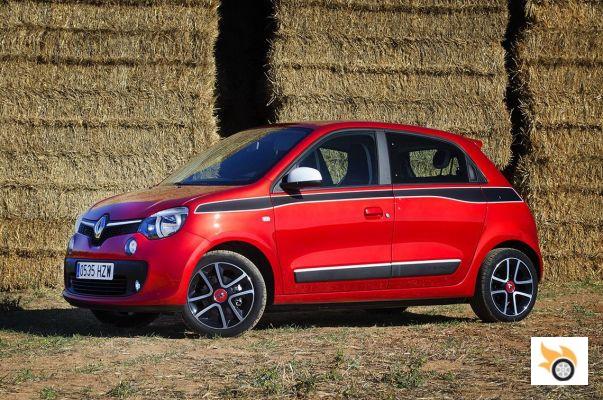
If you try to have fun with it, remembering its "rear-wheel drive" condition, you will be disappointed. Renault has played it safe, and the car, even in the wet, doesn't let the rear end go "not even in a hurry". It's a very understeering car, with a very low ratio steering, which turns quite flat, yes, but it's difficult to drive fast with fun because of the radical feel of the brake pedal.
The engine is well served, with a 80-120 in 8.5 seconds that, for the aspirations of the car, are not bad. The only downside is the bumpy power delivery I mentioned above, and the throttle feel, which isn't ideal either.
The last thing that adds up is the rear end bounce problem. I'm not really sure why, but the rear is very bouncy over bumps, more than any of its rivals, which means that if you hit an expansion joint or similar in full support, you feel the rear end bounce and the shock absorber can't control the wheels properly, although there's no risk and the car continues where it was going.
Driving on open roads at a normal pace consumption can be reduced to six litres on average easily.
Conclusions
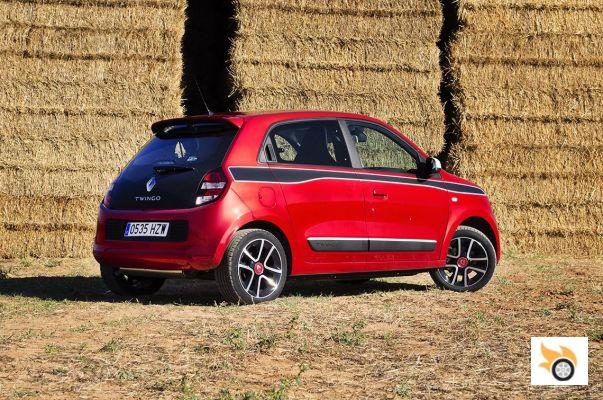
Renault's bet is strong. I found the Twingo a very aesthetically interesting car, cool, that people like. Its cabin could be better made, though. The performance in the city is outstanding, with an agility and manners that will please those who spend all day driving it.
However, if you're going out on the open road, even if it's a ring road, and you're going to explore speeds of over 60mph, there are cars with much better handling in the A-segment. Renault's decision to give more weight in the order of preference to urban performance, the elevated body design and the choice of rear engine position have all combined to make the car a bit of a handful when you leave the city.
In this version, with the 90 horsepower engine, can be purchased from 13.525€. It is not a cheap figure, although it is cheaper than its cousin, the Smart ForFour, which is better finished and finished. But if we look at its rivals, we find that the segment's sales leader, the Panda, offers more luggage space and better road holding for less money, although in chic character it's less cool than the Twingo.
If the question is to buy a chic city car, then the rival is the other segment leader, the Fiat 500. The Italian car has two fewer doors, but it has the same boot space and better road holding. The Renault can respond to both Italians with its unprecedented agility in the city.
As always, in the end the decision will have to be up to you, taking into account the type of driving you're going to do, and which car appeals to you the most.

























